If you are reading this, you most probably have a baby in the home or are preparing for the arrival of your new little bundle. With the call for a greener planet there has been a big revival in the use of reusable cloth diapers. With so many options available, it might be daunting and difficult to choose which one is best for you. As with many decisions in life, your budget normally plays a big part so here I’ll be looking at the most economical options and the costs associated with them.
Why use reusable cloth diapers? Save money and leave a far smaller footprint on the planet by not putting disposable nappies into landfill sites, (you might need as many as 10 reusable covers and 24 diapers, depending on the type, or you might need less) whereas you’ll be using thousands of disposables during the approximate 2 and a half years that you baby will be using nappies. Whichever type you choose, you will need a waterproof diaper cover and inserts.
One Size Diaper Covers
The most economical diaper cover is a One size cover or also called a birth to potty cover. A One size diaper cover is designed to grow with your baby so is equal to 4 sizes in 1. OsoCozy and Rumparooz are the 2 that I would recommend.
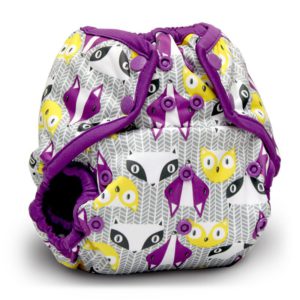
Rumparooz will fit a baby weighing 6 -35 pounds and OsoCozy a baby of 8 – 35 pounds.
Closures: Snap closures with adjustable side to side settings and rise adjustments
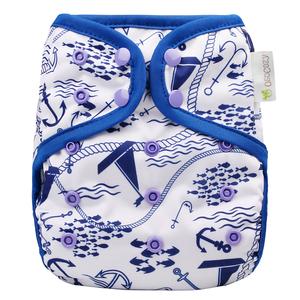
Double leg gussets are soft and gentle and will keep any messes contained.
One size diapers will fit your baby and also your choice of diaper insert be it prefold, fitted or flat cloth.
Size can be perfectly adjusted and will last until potty training.
Wipe down outer surface means the cover can be reused several times before it needs to be washed (unless it is soiled)
Built to last change after change
Both are available in an attractive range of colours and cute designs.
By choosing a One size diaper cover you will maximize the affordability, but different options are also available and this is where you can explore them
Which insert is best for you and your baby?
There are several different inserts available so let’s compare some of these.
1. Flat cloth diapers:
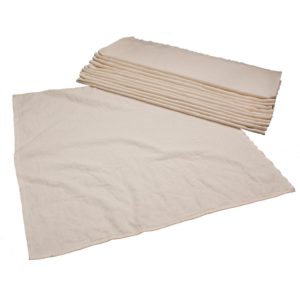
Birdseye cotton weave diapers are flat and measure 27″ x 30.5″ (before washing them). They will shrink to a square when you wash them, making them easier to fold. It is available in bleached or unbleached cotton or an inexpensive organic cotton option. They are all thickly woven. If you like folding your own cloth diapers, then these are for you.
Flat cloth diapers are very versatile and have many other uses around the home including being used as burp cloths, dish towels, changing pads, bibs, wash cloths, lap pads, cleaning cloths, shoe and car polishing cloths, dusting, furniture polishing and more.
The most economical choice would be flat cloth. OsoCozy organic cotton Birdseye flat is 100% GOTS certified and is an inexpensive organic option at $27.95 for a pack of 12.
2. Prefolds:
Prefold cloth diapers are rectangular in shape and have 3 panels made from multiple layers of lightweight woven fabric. The central panel have additional layers to increase the absorbency. When choosing your prefolds you will notice that they are available in different sizes and have a 3-part number like 2 x 5 x 2 or 4 x 6 x 4 or 4 x 8 x 4. This 3-part number refers to the amount of layers in the 3 panels with the middle panel being the thickest. Most home users prefer the thicker choice of 4 x 8 x 4 as your baby will need fewer changes. Diaper services often opt for the thinner 4 x 6 x 4 option as they are quicker to dry.
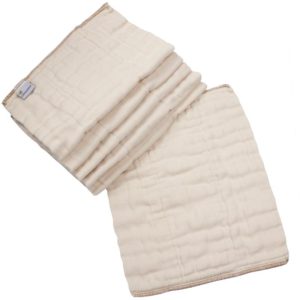
- Indian cotton prefolds measure 12″ x 16″ and are several layers thick. It is made from 100% unbleached cotton and thickly woven. There are 6 options to choose from for size and absorbency with 4 layers along the sides and 8 layers in the middle being the most popular as even heavy wetters would not leak.
- Chinese cotton prefolds are traditional long length and made from 100% cotton and bleached white. Chinese cotton prefolds are not as soft and fluffy as Indian cotton prefolds
- Better fit prefolds are shorter than the traditional prefolds so will tuck into the diaper cover without having to fold it lengthwise. They are also less bulky and are available in 3 sizes.
- Organic prefolds are made using 100% GOTS certified unbleached organic cotton. Both traditional and better fit prefolds are available in organic cotton with 2 size option in each.
- Bamboo organic cotton prefolds are a blend of 50% Bamboo and 50% organic cotton and are also available as traditional or better fit prefolds.
Prices for these are currently as follows:
- Indian cotton unbleached or bleached from $12.50 for 12
- Chinese cotton from $15 for 12
- Better fit from $20.50 for 12
- Organic from $15 for 6
- Bamboo organic cotton from $16.50 for 6
3. Fitted cloth diaper
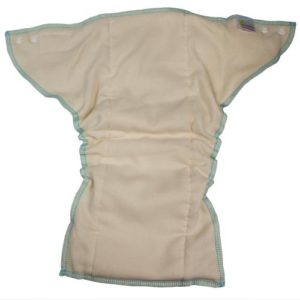
These are the most expensive inserts but very popular as there is no folding required. It has a secure fit with no leaks and is easy to wash. It is less expensive than all-in-one, all-in-two and pocket cloth diapers.
Fitted cloth diapers are shaped like an hourglass so is narrower between the legs. It has elastic at the legs and waist for a snug and leak proof fit. They are adjustable with snaps so it is easy to change the size. They are very easy and quick to use – snap the diaper on and then snap the cover over it.
There is a choice of organic cotton or bamboo organic cotton for your fitted diapers. Organic cotton is available in 4 sizes and with the OsoCozy bamboo organic cotton fitted cloth diaper you have a choice of 2 sizes from $12.98 each.
Bleached vs. unbleached vs. organic cotton – chemicals are used in the bleaching process which weakens the fibers and is not good for the environment. Unbleached cotton is softer and more durable than bleached diapers and also hide stains better. Organic cotton is more expensive but would be the first choice if you can afford it.
How many diapers and covers would you need?

The quantity you need would depend on the age of your baby and how often you wash. A newborn baby uses about 10 diapers per day but a toddler only 4 – 6 per day. If you wash twice per week you would need to look at 36 – 48 diapers for a newborn and 18 -24 for a toddler. If you wash more often you would need less.
Diaper covers will normally last you several changes unless they get soiled. The recommended ratio is 1 to 3, so for every cover you need 3 inserts, so look at 8 – 10 covers to start with. You can always add more if you need them.
Why choose reusable cloth diapers?
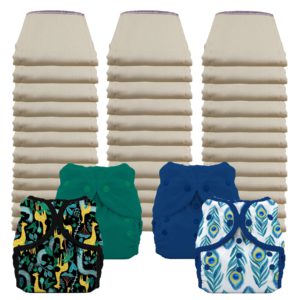
The biggest benefit is to your baby with no nasty chemicals exposed to their delicate skin. Hypoallergenic unbleached cotton is safe and gentle for the most sensitive bottom. Organic cotton and bamboo inserts are even softer and will not cause allergic reactions.
The cost of reusable cloth diapers might be more upfront, but it will save you money over the time that your baby wears a diaper. Disposable diapers will possibly cost you in the region of $1,500 (depending on the brand you choose it might be more) during your baby’s diaper wearing time. Even choosing the most expensive fitted inserts and covers, you will be spending less than $500. If you opt for flat inserts then you will be spending less than $250 for your covers and diapers.
Choosing a one size cover also means you don’t have to buy more covers as your baby grows. Buy in bulk and there will be money saving advantages. Choose from one of the “package deals” and you could be spending less than $100 on 4 covers and 36 inserts
You will be helping our planet by greatly reducing the amount of disposable diapers that end up in landfill.
Cleaning it is easy
To increase the absorbency of your cloth diapers you need to pre-wash them a few times before you use them. Beware of build-up of detergent in the diapers so don’t use too much detergent. You can give them an extra rinse to get rid of excess detergent.
Don’t use fabric softener as it would coat the fibers and make them less absorbent.
You will need a diaper pail or bucket to keep the dirty diapers in before you wash them.
Drying them naturally is best but if you need to use a tumble drier, then choose a low to medium setting.
All prices mentioned in this article were correct at the time of publication.
I look forward to receiving your views and comments

Hello, a fellow cloth diapering mom here! It always make me happy seeing other moms who are into cloth diapering, as well. I only wish I have known all the cloth diaper knowledge earlier to avoid mistakes. Because I was a total newbie and lacked more research, I bought cheap diaper covers and now with my 2nd baby, they are not as leaked-proof as before and it makes me a bit lazy to go cloth diapering full time because with 2 kids, it’s a lot of work. 🙁 I feel guilty everytime I use a lot of disposables in one day.
I would suggest that your add a few good quality reusable diaper covers that will be kinder to your wallet and the planet thatn using the expensive disposable diapers.. I hope this helps.
Deciding which brand is good enough for you completely depends on your experience with the brand. These quality baby diaper listed in this article are worth a try for any parent switching to cloth diapers. Overall, if you are making plans to cloth diaper your baby. I am sure you will be more than satisfied with the listed brand. You just have to give it a trial.
I am sure you will find that your baby will love reusable cloth diapers.
So much have been said about diapers generally and parents have been dealing with buying different diaper for their babies. Making use of these cloth diapers would be really good as it’s the first time I’m learning about it and it seems like a really nice option if you get the right one to make use of for your baby
Reusable cloth diapers are better for your baby, you save money and they are better for the environment. I am sure you will find the right one for your baby.
So I’m a bit old, but I sure remember cloth diapers and “rubber pants”. That is you put the diaper on and an elasticized rubber pant over it. The rubber pant seemed to pinch. Options available today are so much more colorful and pretty.
As a person who is also concerned with the environment, I am appalled at the number of throw-away diapers filling our landfills. The earth is only so big. We have to find solutions that have less impact, and that means, in this case, going back to the old ways – but will a new, cuter, look.
I fully agree with you that the earth is only so big and we have to use products and materials that leave a smaller carbon footprint. Reusable cloth diapers is better for your pocket and the environment, and indeed are available in very cute patterns and designs.
Thank you for your post. It is useful for me. My grandson is about 2 months old and is allergic to regular diaper. We talk about alternatives, but never take time to do research.
Here comes your article, which contains useful information for us. Cloth diaper could be the solution for us. I particularly like your description on Cleaning it is easy. I know cloth diapers are reusable and we worry about how to clear the cloth diaper. Thanks for the advice on how to use detergent for cleaning. We will try to use as little as possible so that there is no detrimental effect on baby’s skin.
I am pleased to hear that you found the post helpful. If you use an organic washing powder that is suitable for babies, that should help your grandson’s skin. Hope this helps.
When my boys were younger, I chose to use cloth diapers for them because of the environment. However, I was also very tired of having to constantly wash them. So I am glad that they were also toilet trained quite young.
I have tried prefolds before, but they were uncomfortable and clumsy on them.
Hi there, thank you for your comment and great to hear that you used cloth diapers for your boys. With technology advancing prefolds are also getting easier to use. Cloth diapers are certainly better for the environment than disposable diapers.
thanks for sharing this with us, Fitted cloth diapers are shaped like an hourglass so is narrower between the legs. It has elastic at the legs and waist for a snug and leak proof fit. They are adjustable with snaps so it is easy to change the size. They are very easy and quick to use – snap the diaper on and then snap the cover over it.
Hi Wilson, you are correct in your observation and fitted cloth diapers are indeed easy and quick to put on. The elastic and fitted shape also mens that there is a smaller chance of any leakages. They really are pretty good.
Heloo there, thanks for this beautiful review on the better choice doe your baby’s skin. I basically do not have a baby, although I definitely know I will someday. A friend of mine Just gave birth to a bouncy baby boy so I thought it wise to make some research to see if I can get her some diaper. I am very ok with the reusable cloth diaper, they’re indeed economical.
I am going to be getting the flat cloth diapers and a birth to potty cover, they’re my best take. Thanks for sharing.
Hi Sheddy, lovely to hear that you think you have found a suitable gifts for your friend who has had a baby. A birth to potty cover means that she will be able to use it for at least two years if not longer, so a great choice in my opinion.
This cloth diaper is a better choice for your baby because, it saves you from loitering everywhere. The reason for this also is that you can re-use it after washing it and also drying it. The is a perfect choice also for the younger ones planing to start a family, they can get involve in this act of cloth diaper so as to save the cost of buying diaper every time.
Hi Kevwe, you are quite right that you will save a lot of money if you use reusable washable nappies. Not to mention the benefit to the environment
I know firsthand how cloth diapers are back “in” as we used them with my son. I can see the good and the bad in them. It is certainly a little more work to deal with a messy diaper, but I also like the cost-effectiveness and that it is better for the planet. One other thing that I like more than disposables is that the diaper covers usually have really cute designs on them! We have another baby on the way, so it is a good bet that we will be using them again!
Hi Steve, I agree with you that there are good and messy things about reusable nappies, but they are certainly far better for the environment that the standard disposable nappies. Not to mention far better for your wallet as well.
I was amazed that cloth diapers are making a comeback. The eco reasons make a lot of sense. The prices seemed very reasonable too.
You addressed the issues of skin sensitivity well. Making sure that the detergent residue was removed as well as not using fabric softeners were very helpful indeed. In the old days when cloth was used, there was no such thing as plastic liners. Using these definitely helps to minimize or even prevent leaks.
My main concern with using cloth is how to manage and clean the soiled diapers. This could get rather messy. I was hoping to see more tips in this area. One approach could be to rinse off the mess in one bucket before soaking them in another before washing. But these are small inconveniences that are worth going through in order to reduce the vast number of disposable diapers in the world.
I hope that the use of cloth gains momentum.
Hi Edwin, solids are normally flushed down the toilet so no need to rinse it in a bucket. One can use a special little hose with a spray to get rid of the solids as well. Many manufacturers now advise that soaking is not required, just store the wet diapers in a bucket with a lid and washing regularly, at least three times per week.